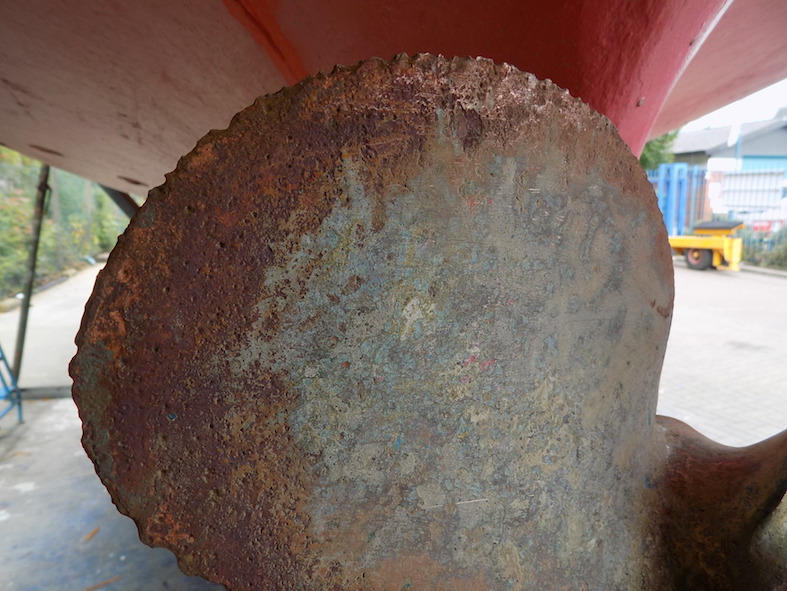YSC Blog Post
Corrosion
7 February, 2017
Corrosion has been the enemy of boat owners for centuries and can cause severe damage to underwater metal fittings if not controlled properly. It is caused by the exchange of electrons between two different materials when in an electrolyte such as seawater. The material that gives up its electrons is called the anode and the material that receives them is called the cathode. The anode will loose material and the cathode will be coated by them.
There are two main types of corrosion to worry the boat owner, these are electrolysis & galvanic corrosion. Galvanic corrosion is caused by two dissimilar metals being in an electrolyte solution and causing electrons to flow which leads to corrosion of one of the metals. Electrolysis or stray current corrosion is caused by one of the metals being charged by a different electrical voltage. This can happen due to a wiring or equipment fault or even a fault on the wiring of the boat moored next to you!
Galvanic corrosion can be prevented by the fitting of sacrificial anodes to the hull in strategic areas. The anode material should be selected to suit the salinity of the water the vessel is cruised in and should have enough surface area to protect the vessel's metal work below the waterline. MGDuff a well known producer of anodes offer an excellent online search facility to choose the correct anode and a helpful database. The anodes should be inspected annually and replaced when they are 50% depleted.
Electrolysis is more of a problem and can cause severe corrosion very quickly even if you have galvanic isolator fitted on board. The propeller in the picture below was fitted to a yacht with a galvanic isolator but still suffered electrolysis so severe the propeller as beyond repair and had to be replaced. This type of damage will often only become apparatent when the vessel is lifted for its annual inspection or repair. If electrolytic damage is found it is worth conducting a test for stray voltage in the water around the vessel by hanging a silver chloride reference cell with a multimeter to determine if there are stray voltages at each skin fitting.
The main signs to watch out for when inspecting your underwater metal gear are a slight pink tinge to the surface colour and pitting of the surfaces. These symptoms indicate that there is something amiss that requiring closer investigation to prevent serious damage occurring. Contact your local yacht surveyor or speak to a qualified marine electrical engineer to discuss the problem and find a solution.

